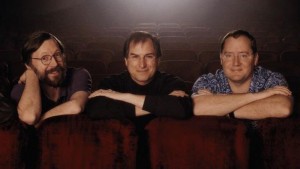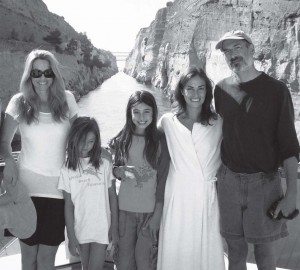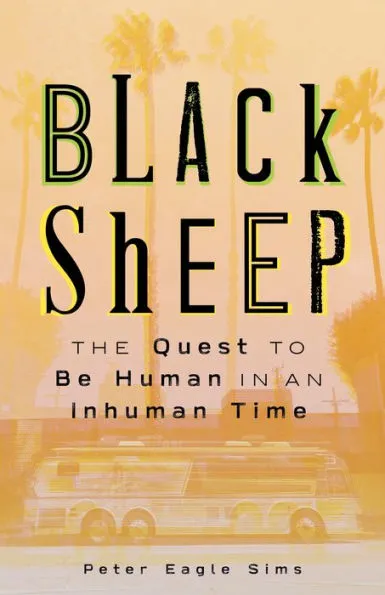As the three-year anniversary of Steve Jobs’ passing approaches in October, complete lessons from his life and legacy are still far from written or understood. Walter Isaacson’s biography Steve Jobs, published soon after Jobs’ death in 2011, provided a formidable starting point, yet we still have a great deal to learn and understand about what made Jobs such a unique innovator and leader.
In studying Jobs closely over the past several years, I’ve become convinced that the common narratives we’ve heard neglect a central aspect of Jobs’ of genius and success. And, it’s something that we can all learn from, which is this: Steve Jobs was a superb collaborator with the people whom he respected and trusted.
Now, we’re all familiar with the common narratives about Jobs’ unique talents and success: that his unique genius was in his ability to foresee technology vectors and envision, design, and execute truly brilliant products and platforms — from the Macintosh to the iPhone to iTunes to Apple stores (as well as, it must be said, a host of ideas that failed miserably). As a leader, Jobs’ sheer force of personality and charisma motivated everyone involved — sometimes with a “reality distortion field” — to achieve mind-numbing perfection with products, down to every last detail of Apple’s packaging.
Yet, Jobs’ product genius and charisma cannot explain the parallel — and simultaneous — breakthrough successes at both Apple and Pixar Animation. Just contrast how Jobs led at Apple, where he by all accounts made the final product and branding decisions as the company’s “editor,” compared with the roles he played at Pixar. At Pixar, where Jobs was the chairman and primary funder during the company’s start-up years, Jobs played the role of chief business strategist and leader yet was nearly entirely hands-off from the creative operations and development of Pixar films. For example, Jobs never once participated in a story review session for a Pixar film.[1]
Instead, Jobs relied on John Lasseter, Pixar’s creative lead, Ed Catmull, Pixar’s lead technologist and president, and a small initial cadre of animators, including Pete Docter (who would go onto direct Monsters, Inc. and UP) and Andrew Stanton (who would go on to direct wall-e and Finding Nemo), to develop Pixar’s ways of working and processes. Jobs, for instance, gave Lasseter and company full leeway to establish Pixar’s approach to developing new ideas, including exhaustive storyboarding, as well as the company’s routine of animation “dailies,” the daily meetings where animators discuss their works in progress each day in order to advance and build-up or “plus” each others’ ideas.
Catmull, now president of both Pixar as well as Walt Disney Animation (a position Catmull has held since Disney acquired Pixar for $7.4 billion in 2006), was Jobs’ longest-running colleague, a working relationship that spanned 26 years. Catmull dedicates a chapter of his superb recent book Creativity, Inc. to what it was like to work with Jobs. Catmull, who has the least overt ego of any senior executive I’ve ever met, saw Jobs mature enormously over time, especially in the development of personal empathy and humility.
In fact, Catmull, sees Jobs’ life as having taken a classic Hero’s Journey arc.
From his widely-reported immature and often arrogant youth, Jobs by all accounts appeared to develop into a far more empathetic human being and wise leader. But that personal transformation would not have happened without what leadership scholar Warren Bennis described as “crucibles”? —?those personal crises and setback experiences that shape us much like “medieval alchemists used in their attempts to turn base metals into gold” — and, that allow for personal and leadership metamorphosis.
Back to the beginning and how Pixar became Pixar thanks to a brilliant collaboration
Freshly fired from Apple at age 30, not even Jobs could have envisioned what Pixar would ultimately become when he bought the company from George Lucas in 1985. He had learned about the nascent company from his friend Alan Kay, the legendary technologist, on a walk along the railroad tracks in Palo Alto. Kay had attended the University of Utah to obtain a PhD with Ed Catmull, a brilliant technologist. Catmull, who wanted to do something great with his life’s work, decided at Utah that his life aspiration would be to make the first full-length digitally animated film. Most everyone thought he was nuts.
A few years out of graduate school, Catmull was recruited by George Lucas to run LucasFilms’ computer imaging division. The company made hardware to support digital animation for Lucas’ films, as well as other imaging technologies, such as MRI imaging. But after a couple of years of R&D work, Lucas went through a difficult divorce, and needed cash, so he had to sell the company. Enter Steve Jobs, the lone bidder standing after Lucas’ efforts to shop the deal around.
Despite the unproven market potential of Pixar’s hardware, Jobs had immediately fallen in love with the technology. In David Price’s excellent history of the company The Pixar Touch, Jobs originally believed the company would be the next great hardware firm.
In fact, when he bought Pixar, Jobs never believed that the company would ever make money on digitally animated films. Pixar would become the HP of imaging, Jobs predicted.
As Price outlines, Catmull, Lasseter, and another early cofounder, Alvy Ray Smith, had always focused their dreams on making a full-length animated film despite the fact that the technology required to do so was believed to be at least a decade away. Jobs knew about their passion when he bought the company from Lucas. (Lucas had even told Jobs that the team was “hell-bent” on making animated films.) And, Jobs always appreciated that passion, but he valued their skills and talents even more. So, he allowed the team to make short animated films in order to demonstrate the value of Pixar’s hardware. Learning how to make short films extremely well was, in fact, how Catmull, Lasseter, and company learned how to tell animated stories, and to make the technology (software and hardware) to eventually support making a full-length digitally animated film.
It was an extremely difficult journey, and ultimately cost Jobs $50 million in personal investment.
After the hardware wouldn’t sell in the marketplace, Jobs pivoted Pixar’s vision and focus in the mid-1980s and let the world know that Pixar was going to be a great software company. That strategy lasted for an even shorter period of time. Close to bankruptcy, Pixar had developed its digital animation, technology, and storytelling capabilities and short films to the point where the company won the Academy Award for its short film Tin Toy in 1988. That was the clarion call Jobs needed. He then pivoted the company again, to focus on animated commercials, and soon enough, had a deal with Disney to produce the first full-length film: Toy Story.
And, so, while not even Steve Jobs could have predicted that Pixar would produce blockbuster digital films, Catmull and Lasseter never would have gotten there without Steve Jobs as funder, strategist, external negotiator and salesman. Given the agonizing setbacks and toils along that path, and regular need for capital, Catmull describes Jobs as “our protector.” It was a brilliant collaboration, with each person performing the roles best suited to their talents and experiences.
How to argue with Steve Jobs
Steve Jobs was obviously a extremely driven and demanding collaborator. Yet, with the people he respected and trusted, such as Catmull and John Lasseter, Jobs listened, shifted his positions when convinced, and even valued collaborators’ personal preferences. Catmull, for instance, described in an interview about Creativity, Inc. at Stanford University how he and Jobs would argue when making decisions.
Despite Jobs’ frequently confrontational style, Catmull says that he and Jobs never once got into a yelling argument. That would go against Catmull’s personal nature, something that Jobs evidently respected. “The way it worked was,” Catmull discovered, “That I would say something to him, and he would immediately shut it down because he could think faster than I could.” Catmull would then wait a week, give Jobs a counterargument to what Jobs said, and Jobs might shut it down again, and the pattern would repeat, sometimes for months, until the two reached a resolution. Catmull reflected on how those interactions unfolded:
In the end, one of three things happened: About a third of the time, he [Jobs] said, ‘Oh, I get it. You’re right.’ And that was the end of it. And, there was another third of the time when I [Catmull] would say, ‘You know what, actually, I think he’s right. The other third of the time, where we didn’t reach consensus, he just let me do it my way. Never said anything more about it.’[2]
Tellingly, over 20 years later, Catmull, Lasseter, Docter, Stanton, and many others have stayed at Pixar, often turning down very lucrative alternatives, and focused intently on developing the next generation of filmmakers and company leaders. Jobs wasn’t the visionary at Pixar, he was the glue.
The hero departs: If Steve Jobs (especially “the younger” Jobs) didn’t respect or like you, he gave the middle finger to collaboration, and could be a massive asshole
All of that said, Jobs’ often confrontational personality naturally rubbed a lot of people the wrong way. For instance, Alvy Ray Smith, a brilliant technologist, left Pixar during its formative years following numerous personality clashes with Jobs, which he describes in detail as well as to share his side of Pixar’s history (revisited) on his website.
Meanwhile, during Apple’s early years, Jobs could be nothing short of impossible. As his co-founder Steve Wozniak has said, a lot of people who worked with the younger Jobs despised him. “Some of my very best friends in Apple, the most creative people in Apple who worked on the Macintosh, almost all of them said they would never, ever work for Steve Jobs again,” Woz recently explained in an interview with the Milwaukee Business Journal, “It was bad.”
Wozniak explained that in his earlier years at Apple, Jobs pushed people to bring products out before they were ready, creating enormous strain on employees and creating rifts.
“He would directly confront people and almost call them idiots,” explained Wozniak. “But you know what? When they confronted him back and told him why they were right in understandable forms, he was just testing and learning, and he would respect those people and give them high privileges in the company.”
“That was one thing he did respect — someone who believed enough in their own ideas to speak for him, not just shut up and be shy around him,” he said.
Again, while it must be said, we’ve all heard Jobs stories like these, and this narrative. Jobs “the younger” leadership was often destructive and counterproductive. But, according to all accounts I’ve gathered, through a number of personal crucibles — most notably getting fired from Apple — Jobs grew his leadership and his ability to collaborate enormously.
The hero returns: Steve Jobs the remarkable collaborator
Despite the fact that Jobs burned countless working relationships with his style, especially early in his career, he developed a remarkable number and array of productive collaborations throughout his career with some of the most respected leaders in their domains. Owing to some combination of pure results and mutual respect, which included his willingness to listen to people he respected and reconsider his views, Jobs was a magnet for talented collaborators and partners.
A sampling includes: Pixar’s Catmull, the brilliant technologist who grew into a strong manager and leader (Catmull is frequently known inside Pixar as “The Pope”), as well as John Lasseter, a once-in-a-generation creative leader, once fired from Disney before he was hired by Catmull, and who is now Chief Creative Officer for both Pixar and Disney Animation. Meanwhile at Apple, Jobs forged a host of extremely effective, long-running partnerships, notably with senior vice president of Design, Jonathan Ive, who has led Apple’s design team since 1996, a partnership that has been well documented. Other very strong collaborations included Scott Forstall, the mobile software chief with whom Jobs partnered to design and commercialize the iPhone, as well as retail chief Ron Johnson, with whom Jobs worked closely to design and launch Apple’s stores.
Critically, Apple’s long-time Chief Operations Officer Tim Cook became the operational ballast to Jobs’ creative, marketing, and product genius. Before becoming Apple’s CEO after Jobs’ death, Cook led huge operational improvements and efficiencies throughout Apple’s supply chain, such as reducing inventories from 60 to 30 days. Not since Bill Hewlett and David Packard has Silicon Valley seen a partnership with such effective balance of innovation (Hewlett) and operations (Packard). (Mark Zuckerberg and Sheryl Sandberg have forged an impressive partnership as well.)
Now that Cook is CEO, the biggest question that I (and many others) have in the post-Jobs era at Apple is how well Cook will be able to build and maintain productive collaborations.
While there is a notable absence of female collaborators in the above list, perhaps Jobs’ most impressive partnership of all was with his wife Laurene Powell, whom he married in 1991. After years of relationships that exposed Jobs’ youthful arrogance and weaknesses, including the birth of a child who Jobs failed to initially acknowledge and support, Powell and Jobs forged what was by all accounts a remarkable partnership, including raising three children.
And, today, it is Jobs’ close collaborators who carry his legacy forward: at Pixar, Apple, Disney, as well as within philanthropy, which Powell leads admirably. Her current work includes College Track, a nonprofit based in East Palo Alto focused on increasing high school graduation rates for underserved students, as well as the Emerson Collective, which is focused on supporting the entrepreneurial spirit including through educational programs and reform.
And so, nearly three years after his passing, while Steve Jobs’ once-in-a-generation talents are gone, his dreams and values live on through his collaborators. To me, that ability to forge extremely strong and trusting collaborations was Steve Jobs’ real genius, and one that we can all learn from.




